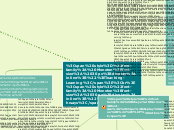a Ashley Z 7 éve
320
TLCP & PLCs

a Ashley Z 7 éve
320

Még több ilyen
Large-scale assessment leads the discussion of questions involving long-term achievement patterns. • How are the grades or divisions doing this year? Over time? • How do we know how well they are doing? • What are we doing to collectively improve learning? • How do improvement trends of the school and district compare to the province?